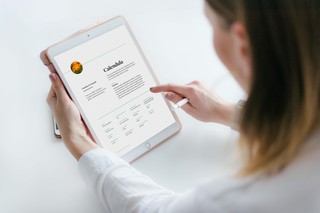The ultimate guide to the best growing media for indoor herbs

Time and time again, when the subject of growing fresh herbs or container gardening comes up in conversation, it’s almost always mentioned by someone to “start with good potting soil”. While most people will politely nod and shake their head in agreement, there is much wisdom in that simple statement. When growing plants indoors in containers it is important you choose the best growing media for the situation.
Importance of growing media in container gardening
So the big question is, why is growing media so important in container and herb gardening?
The growing media used is important for 3 very distinct reasons.
- It acts as a reservoir for moisture and nutrients around the roots of the plants, allowing them access to the resources they need.
- It provides “empty” space around the roots for oxygen, allowing the roots to breathe.
- It provides upright support to plants by anchoring the roots (per Proven Winners).
If you start by filling your pots with a poor-quality growing media, your herb garden project will struggle to be prosperous from the very beginning.
Properties of a good growing media
Potting soil is by far the most well-known and commonly used growing media for container-grown plants, but it’s not the only option available. There are numerous types of growing media that can be used when growing herbs indoors. When deciding upon one to use, look for your growing media to have following properties:
- Lightweight to keep the weight of containers down.
- Holds moisture in the root zone, since containers tend to dry out more quickly than garden soils.
- Contains materials that retain nutrients for plant absorption.
- Drains freely to prevent waterlogging and root rot.
- Doesn’t compact down in the plants, eliminating pore space for water and oxygen.
- Free of weed seeds.
- Sterile.

Indoor potting soil is commonly a mix of several different materials. Image: Rob Bertholf

The enthusiast's guide to herbs
We’re proud to present our new e-book, The Enthusiast’s Guide to Herbs! Learn everything you need to know about growing and caring for herbs indoors, including in-depth info cards for the 35 most commonly grown herbs.
Click the link below to find out more!
Different types of growing media and the benefits of each
The following are the most commonly used types of growing media, their basic characteristics, and the benefits of each type. Most people are familiar with potting soils but coconut coir, peat moss, perlite, and vermiculite are often used too or blended together to create a custom substrate.
Potting soil
Potting soil is the growing media used by most indoor or container gardeners. It is a well-known substrate, and the easiest one to purchase due to its common availability in nurseries, garden centers, and big box stores.
Commercial potting soils are actually a “soilless” mix of peat moss, pine bark, and either perlite or vermiculite. The quantities of these ingredients can be adjusted slightly to create variations suitable for the specific needs of certain plants.
I used to buy all of my potting soil at my local garden center, but after realizing how much bigger of a selection you have on Amazon I’ve started to change that. My favorite brand is currently Fox Farm, you can learn more about them and shop around Amazon here.
Peat moss
Peat moss and other peat materials form as decaying plant materials accumulate in poorly drained areas. Sphagnum moss is the most commonly used form of peat moss; it is light in nature and can retain 10 to 20 times its weight in water while simultaneously draining well.
A naturally low pH makes it commonly used for acid-loving plants such as strawberries, tomatoes, acid-loving ornamentals, and parsley. Its sterile nature makes it a good medium for growing microgreens.
Check out our guide to peat moss to learn more about this growing media.
Coconut coir
Coconut coir is gaining popularity with container gardeners, and its use is becoming more common with indoor herb gardens as well. Part of this growth in popularity is because it is so similar to soil and peat moss. Coconut coir is composed of the brown and white fibers found between the shell and the outer coating of a coconut seed (1), classifying it as a renewable source of material. Coconut husks are soaked in water to remove the coir, and then the coir is allowed to dry and formed into bales.
Coconut coir also has many other benefits: it resists compaction and decomposition, it has a pH close to neutral conditions (5.2 - 6.8 typically), it promotes the growth of beneficial bacteria in the root zone due to the presence of lignins, it is rich in hormones and bio-stimulants to promote plant growth, and depending on the source it may contain plant essential nutrients such as potassium, iron, copper, manganese, and zinc.
Read our article to learn more about when to use coconut coir in your home growing.
Perlite
Perlite is a silica-based mineral originating from volcanoes. The high-grade materials are crushed and then heated to extremely high temperatures until the internal water vaporizes, creating a light, airy substance that is excellent at increasing aeration and drainage (2). Perlite can be a great addition to your soil mix.
For more specifics on Perlite and its applications in your potting soil check out our full Perlite as a growing material guide.
Vermiculite
Vermiculite is formed from heating mica; as heat is applied, the layers of thin plates in the mica expand into accordion-like structures. The resulting expanded particles have a very high water holding capacity and excellent drainage. Similar to perlite, vermiculite can be a great addition to your soil mix.
Check out our full guide to using Vermiculite as a growing media here.
Where to buy growing media
Potting soil is available for purchase at any local gardening center, nursery, most hardware store, and many big box stores. The other growing media can be more difficult to find locally unless you have a retailer with an extensive selection of indoor gardening supplies.
As online shopping contains to gain popularity at an amazing speed, more and more gardeners are purchasing their growing media from online sources instead of buying from a brick and mortar location. Online shopping not only offers convenience, but it gives gardeners access to a variety of products they may not have available in a local market.
With an overwhelming amount of retailers available online, it can become daunting trying to find a trusted source. The following websites are known for a variety of great products:
- Amazon sells just about anything you can want or need, growing media included. Fox Farm is our go to brand. You can learn more here.
- Gardner’s Supply Company sells a variety of gardening supplies, growing media, and fertilizers.
- Big box stores such as Home Depot, Lowe’s, Walmart, and Target all offer potting soils on their websites.
- Grow Organic offers a selection of organic materials for the home gardener.
To help ensure you are purchasing a high-quality product, look for one(s) certified by The Mulch and Soil Council, indicating the claims listed on a label were tested and hold true.
How to make your own potting soil
Some gardeners opt to try their hand at making their own potting soil instead of buying it from a commercial retailer. There are some benefits to this – such as being able to mix the exact ratio of ingredients you want, to tailor the potting mix to your planting needs – it doesn’t always work out to be much cheaper in the end.
If you are interested in making your own growing media, it’s a pretty straightforward process to follow. The Old Farmer’s Almanac and Penn State University have some great instructions and “recipes” you can use.
- Start off by gathering all of your materials:
- A large container or wash/garden tub to mix all of the ingredients together.
- Measuring scoops.
- Shovel or another utensil to stir everything.
- Components of the potting soil you want to create.
- Peat moss, sand, perlite, vermiculite, and some type of organic matter such as compost are the most common choices.
- All-purpose, slow-release granular fertilizer
- Before beginning to mix the components together, clean your container and tools well with either a dilute bleach solution or vinegar to sterilize everything and prevent introducing pests or pathogens into your new potting soil.
- Loosely measure out components, adding them one by one to the wash tub.
- Add a small amount of granular fertilizer to provide nutrition for your plants. Follow the recommended rates based upon the directions found on the fertilizer package.
- After all of the ingredients have been added to the tub or container, it’s time to use your shovel or spoon and gently mix the components together. You can add a little bit of water to keep the dust down if necessary.
- Adjust the pH of the final mixture if necessary. Lime can be added to raise the pH to bring it closer to neutral or even slightly alkaline; granulated sulfur can be added to lower the pH to make the potting soil more acidic.
Special circumstances to take into consideration
For the most part, all commercial grade potting soils are good quality and can be used for a variety of plants but there are a couple of situations where a specific type of potting soil mix or growing media works better than others. In the case of specialty potting soils, they are labeled to advertise their unique characteristics.
- Moisture-loving herbs like chives or cilantro benefit from a potting soil or growing media that has higher moisture retention. Potting soils with coconut coir or higher levels of peat moss will hold more moisture than standard mixes.
- Herbs that like good drainage, like oregano can benefit from potting soils that container more sand or inert materials like perlite or vermiculite.
- Herbs such as parsley like potting soil or growing media with a more acidic pH. Peat moss works well in this case.
Conclusion
When growing indoor herbs it’s important to start with a high-quality growing media that holds moisture and nutrients in the root zone, provides pore space for oxygen, and helps to anchor the roots of the plants in the container. Potting soil is widely used by many gardeners and can be purchased online or locally, or made yourself to meet the specific needs of your plants but it isn’t the only option available. Different options allow you to customize the growing media based upon the herbs or plants you are growing.

Join our email club—get printable info cards free!
Sign up to receive our newsletter and get access to 10 printable plant info cards from our e-book for free. Also receive:
- $4 discount code for our Guide to Herbs e-book
- Semi-weekly plant inspiration & bite-size tips and tricks
Sources
- Sengupta, S. & Basu, G. (2016). Properties of Coconut Fiber. In Reference Module in Materials Science and Materials Engineering. doi: 10.1016/B978-0-12-803581-8.04122-9
- Athanasios, P., Papadopoulos, A. B., Avner, S., Uttam, K. S., & Michael, R. (2008). Inorganic and Synthetic Organic Components of Soilless Culture and Potting Mixes. In R. Michael, & J. H. Lieth (Eds.) Soilless Culture: Theories and Practices (pp. 505 - 543). Amsterdam: Elsevier. doi: 10.1016/B978-044452975-6.50014-9
Feature image: John Tann
